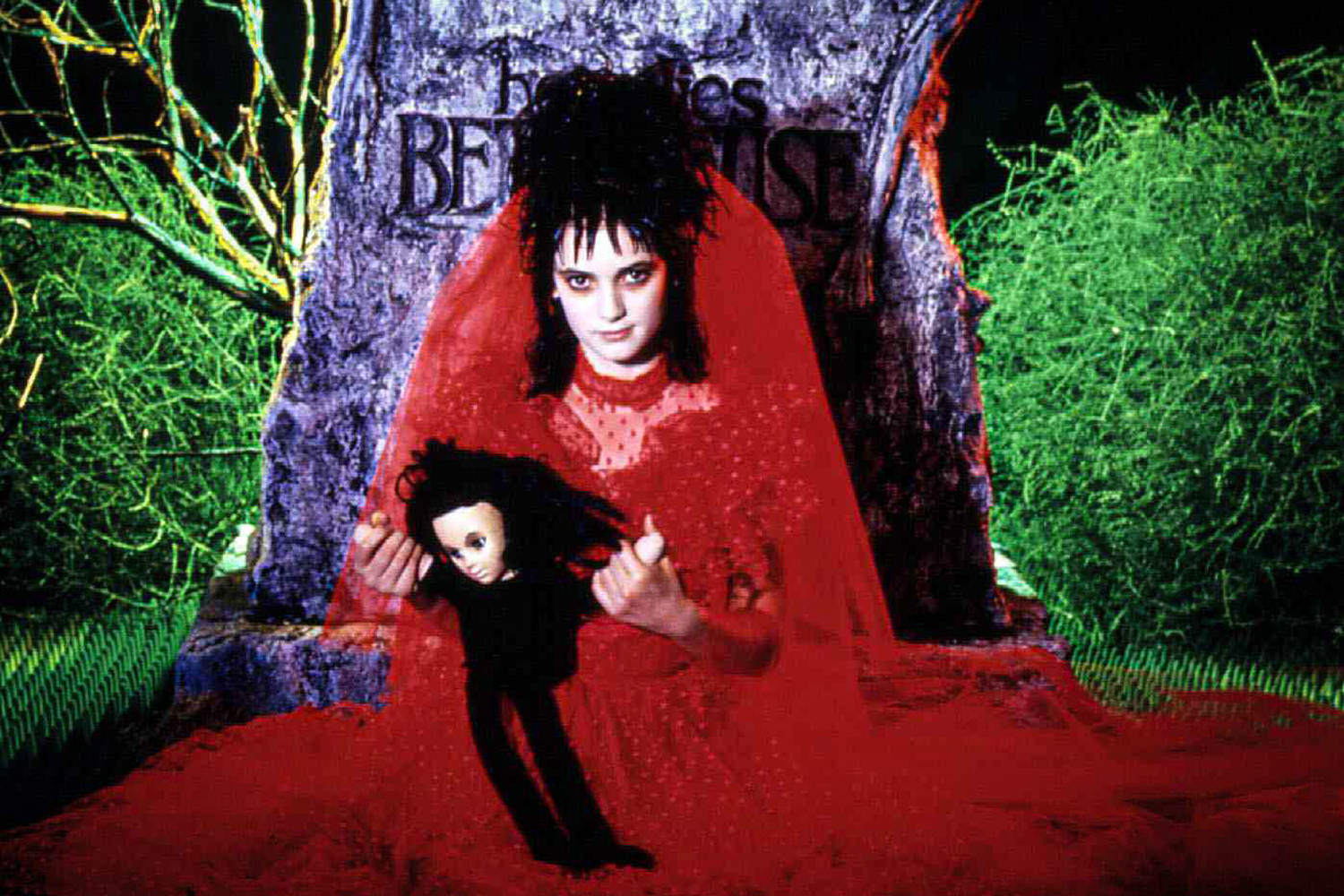
Tim Burton’s “Beetlejuice” is a creative and chaotic tour de force that tells the story of a centuries-old, highly charismatic and very disgusting bio-exorcist, Betelgeuse, who helps a recently deceased couple get some new, alive, inhabitants out of their house. The 1988 cult classic is equally famous for launching Winona Ryder’s career, the raunchy leading demon played by Michael Keaton and its highly impactful vampy, goth glam fashion.
Decades later, Ryder’s Lydia Deetz has an occult, ghost-busting talk show; her no-longer-estranged stepmother, Catherine O’Hara’s Delia Deetz, is still an out-of-touch artist; and Lydia now has a surly, sceptic daughter of her own, Jenna Ortega’s Astrid. Due in equal parts to a cast who reprised their beloved roles and a screenplay in on its own joke, “Beetlejuice Beetlejuice” seems to have largely dodged the usually accurate commentary that sequels are cheap cash-grabs that play on an already emotionally invested fan base. It’s showtime, I guess.
“Beetlejuice Beetlejuice” seems to have largely dodged the usually accurate commentary that sequels are cheap cash-grabs that play on an already emotionally invested fan base.
“Beetlejuice Beetlejuice” coincides with a palpable move away from the clean girl aesthetic that has long dominated social media. Characterized by natural makeup, minimalist clothing and fly-away-free hair in a tight, low bun, clean girl aesthetic is the antithesis of the dark, vibrant, Victorian glam goth that elevates and empowers the women in the “Beetlejuice” world. I’m reticent to call goth a trend that is having a moment in the sun. From Zendaya’s iridescent blue Maison Margiela dress at this year’s Met Gala to Stevie Nicks’ billowy sheer stage outfits to the entire cast of “American Horror Story: Coven” to Sabrina Carpenter’s “Taste” music video to the enduring and increasingly popular British punk designs of the late Vivienne Westwood, gothic glamour demands a certain respect for the women who wear it. It embraces vampy femininity and womanhood while resisting the traditional patriarchal acceptance of attractive dressing.
Goth has roots that extend back to the 20th century, when German expressionist painters explored insanity and death through horror and beauty. The best example is, of course, Edvard Munch’s classic “The Scream.” For our purposes, though, goth came to life, already moody and macabre, as the child of punk and glam rock in the late 1970s. Margaret Thatcher’s postwar conservatism had sparked a cultural maelstrom in the United Kingdom: The kids were fighting back and they were doing it through music and through dress. Punk resonated with Americans across the pond, who adopted the look and lifestyle, which later evolved into goth. In “Beetlejuice Beetlejuice,” Ortega’s Astrid dresses more youthfully punk than her goth glam mother and grandmother, wearing lace-up boots and a torn, striped sweater dress to her grandfather’s funeral in a scene that is illustrative of the generational divide explored in both movies.
Burton and his fleet of dark, self-effacing movies have informed goth fashion as much as they have been inspired by it — especially in “Beetlejuice.” The original movie drew heavily on a glam goth aesthetic that already existed but was so embraced by the subculture it borrowed from that it created its own influence. Pastiche? Maybe. But this push-pull, borrow-steal from subculture fashion has been happening since the beginning of time. Clothes inspire literature, art and movies, and literature, art and movies inspire clothes.
Costume designer Colleen Atwood, who has worked with Burton on numerous films, was tasked with capturing and modernizing the goth glam clothing that helped make the first film so iconic. Atwood made most of the outfits herself rather than pulling from contemporary designers. In an interview with Vogue, Atwood said she aimed to honor the ’80s silhouettes of the first movie, especially for O’Hara’s Delia. “Of all the characters, her style still harkens back to the ’80s the most, so we figured she just stayed in her groove,” Atwood said.
Of course, the most iconic and enduring sartorial moment in the original “Beetlejuice” is Lydia’s red tulle wedding gown, originally created by American costume designer Aggie Guerard Rodgers. The rich blue-red color is said to have been inspired by a Queen Victoria adage: get married in red, better off dead. It’s a fitting descriptor for the forced marriage between a minor and a rotting trickster demon. In “Beetlejuice Beetlejuice,” Ryder’s Lydia wears a red wedding dress once again. This time, notably, without a veil.
For all the rollicking in “Beetlejuice” and “Beetlejuice Beetlejuice,” both movies offer a salient examination of family, particularly between mothers and daughters; the finality of death; and the realities of life and marriage. For all the successful boundary-pushing, dark comedy, gross horror and cutting-edge fashion, both movies seem to have something pretty endearing to say about the power of love.

Leave a Reply